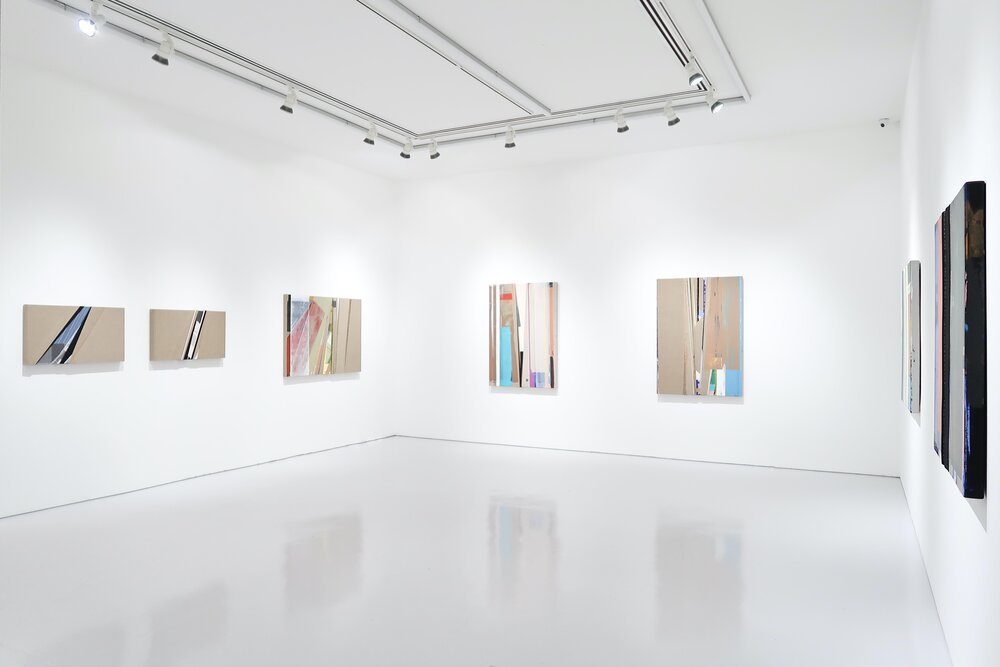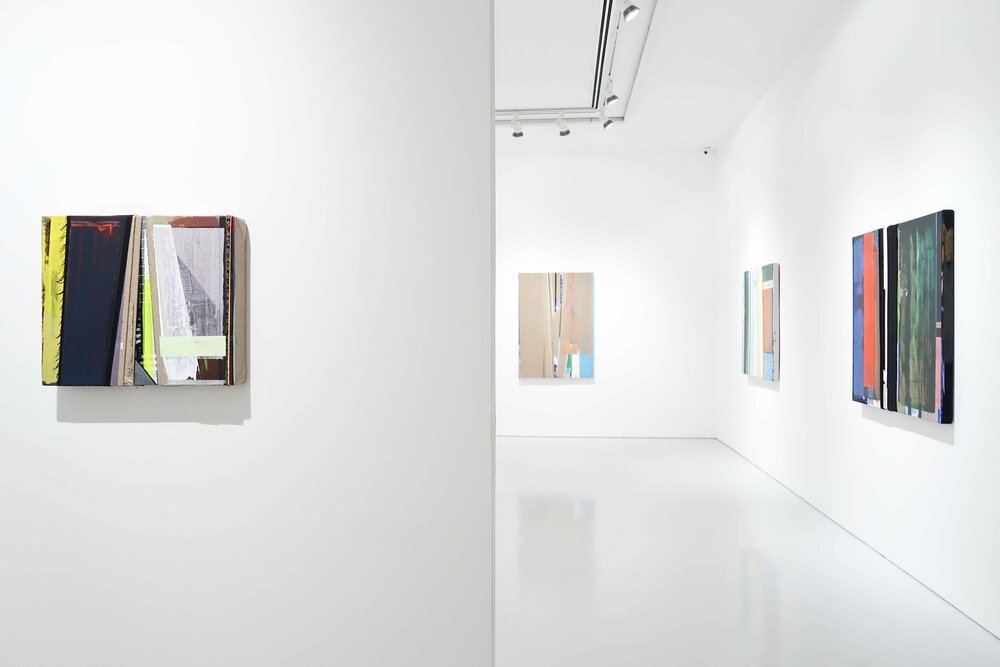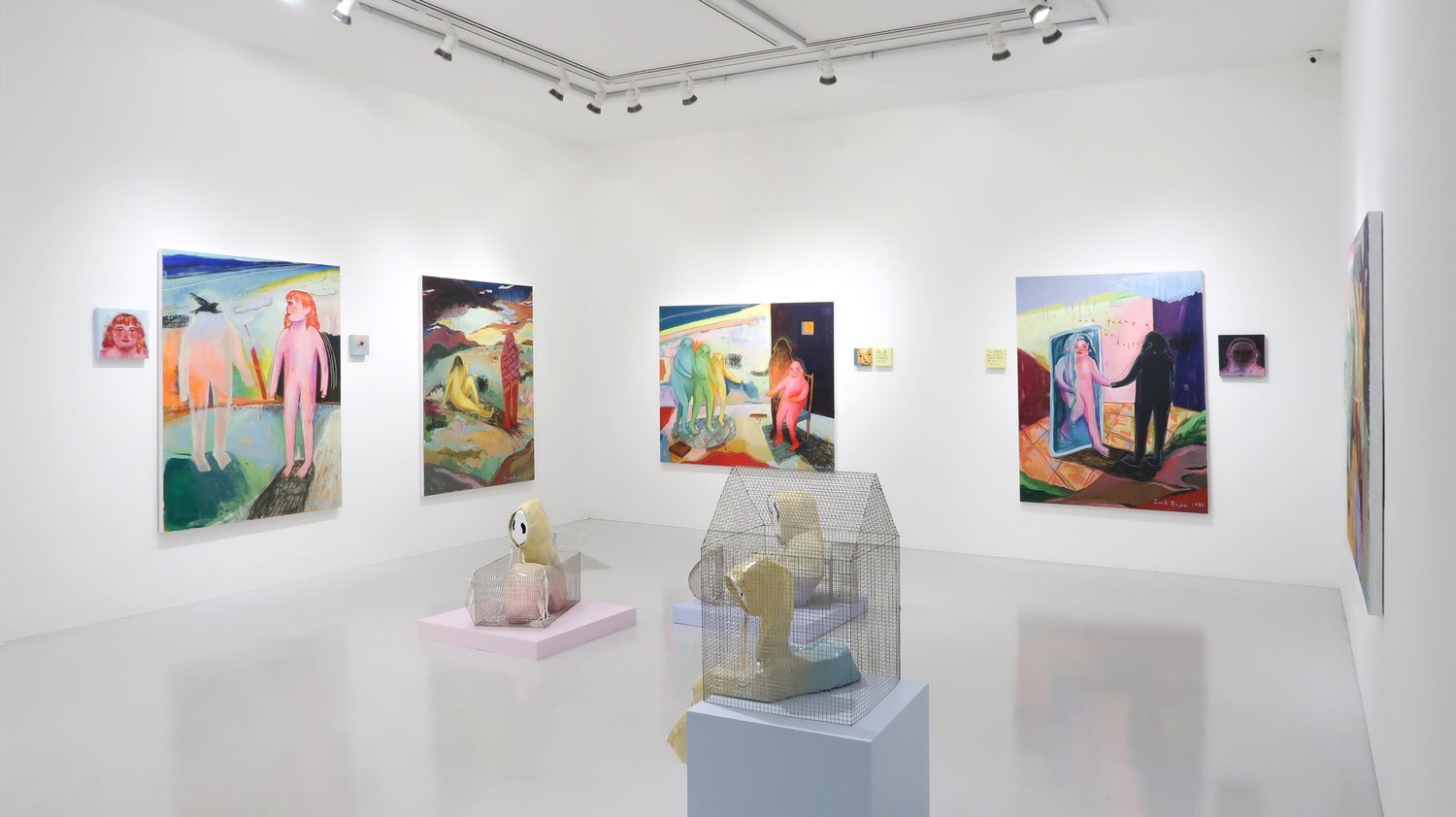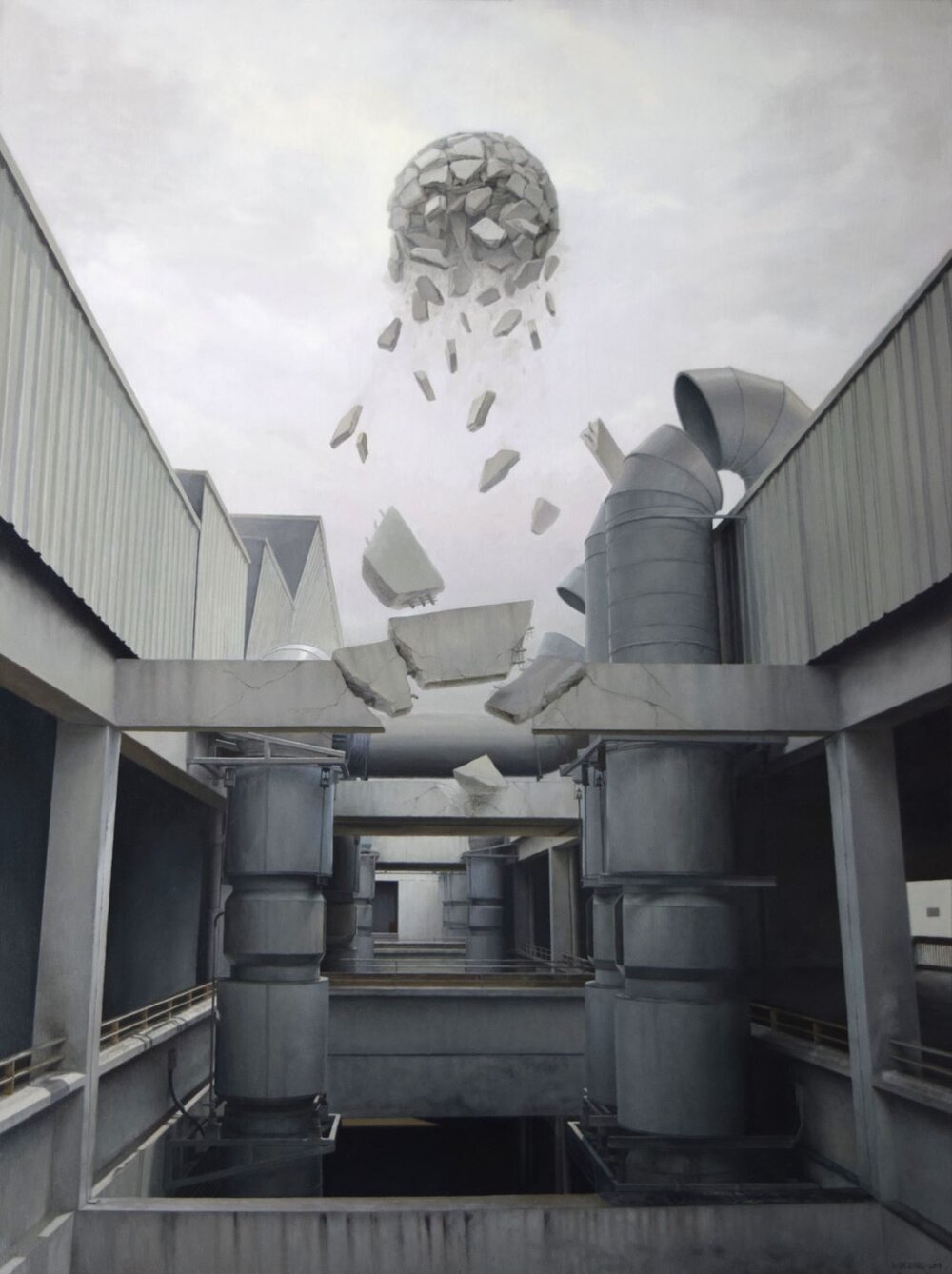Review of ‘Volume Eleven’ at Richard Koh Fine Art
Unpacking identities through geometric abstraction with Ash Ghazali
By Clara Che Wei Peh
Installation view of ‘Volume Eleven’. Image courtesy of Richard Koh Fine Art.
After working in advertising and music for over two decades, London-based Ash Ghazali quit his day job as creative director and has been pursuing art-making full-time. Heavily involved in the Singaporean music scene in the 1990s, Ghazali was a part of the country’s first mainstream hip-hop group, Construction Sight, and a member of the legendary drum and bass DJ crew, Guerilla. Looking back at his colourful career, Ghazali described advertising to be focused on “the art of honing down meaning to its simplest, most captivating form”, and music production to be about “creating a documentation of cultural zeitgeist”. His art-making, in contrast, privileges a process of turning inwards and holding presence, allowing his instinctual expression of self, a masterful appreciation of design and aesthetics, as well as an organic negotiation with his materials to take over. Presenting his second solo show in his homeland of Singapore, ‘Volume Eleven’ opens today at Richard Koh Fine Art, featuring 11 of Ghazali’s recent artworks belonging to a series he calls ‘cut paintings’.
Installation view of ‘Volume Eleven’. Image courtesy of Richard Koh Fine Art.
Ghazali’s cut paintings construct geometric abstraction using traditional fabrics from Malay ethnic groups of Indonesia and Malaysia. Working with these materials, Ghazali aims to separate the symbolic value of the fabrics that are commonly used for ceremonial and religious purposes from their physical material. Beginning with a sliver of his selected materials, he works from the inside out, piecing an image together layer by layer. Working without a predetermined destination, the composition of the cut paintings relies entirely upon Ghazali’s unique appreciation for control and balance. The works in the exhibition all feature a single slit and focal point, fabricated through a careful alignment of the cloths. Inspired by the function of the Qibla, which guides Muslims in the direction of prayer, Ghazali instills each piece with a sense of purpose, upheld through a process of dinging the canvas’ organic destiny.
The premise of constructing an image through ‘cutting’ is one that is particularly curious. To cut is to tear apart, remove or reduce a fragment of a larger body. It is an action that inherently invokes violence. In his works, however, Ghazali makes use of the physical act of cutting as a dismantling tool, to separate the cultural and religious significance from the tangible object itself and consider it under a new light. Simultaneously, he transforms cutting into a constructive process that allows representations of a larger fabric of religious and cultural systems to be overlaid on a canvas.
Close-up of Ash Ghazali, ‘Mahu’, 2019, samping fabrics, acrylic, canvas, cotton, flax and linen, 110 x 110cm. Image courtesy of Richard Koh Fine Art.
In some cases, such as in ‘Mahu’ (2019), Samping fabrics also carry special personal significance. The artist’s mother had prepared the blue and yellow Sampings as gifts for him to wear on his wedding. Now, they are integrated into a network of colours and textures fixed to a canvas, with the sentimental weight assigned to the fabrics partially obscured, in a dissociation of the cultural, spiritual and eventually, the personal, from the materials.
Amongst the canvases displayed in the ‘Volume Eleven’ exhibition, ‘Malay Boy’ (2019) is one of the few marked by a horizontal slit. Painted with thin layers of colour – blue, yellow, orange, brown and black – stretched across the surface of the canvas, the work presents a complex negotiation of space. Playfully peeking through layers of fabric of neutral earthy tones, a velvet cloth of emerald blue lies right at the canvas’ core. Its tactility stands out against the tightly stretched cotton and linen stacked atop each other, while juxtaposing the fragile and frayed ends at the bottom of the canvas. Adapting the materials of an Islamic prayer mat and Samping cloth, Ghazali names the artwork in direct reference to his own identity as a ‘Malay Boy’, and at the time of completion, the artist reveals that it was a self-portrait for him.
Installation view of ‘Volume Eleven’. Image courtesy of Richard Koh Fine Art.
Interested in the issues of translation, the majority of the artworks featured in the exhibition are titled with Malay and Arabic words, lifted from daily usage, prayer and poetry. The artist himself is only fluent in English but not Malay or Arabic, suggesting that his adoption of these particular words are purposeful connections drawn from aspects of his identity and upbringing.
Walking out of the gallery into the warm humidity that is Singapore in January, deep in the season of the Northeast Monsoon, the bold and precise lines straddled across Ghazali’s canvases continued to linger in my mind. Informed by the expertise he has accrued across various corners of the creative industries, Ghazali’s approach to creating and conveying narratives is honest and direct. His highly precise yet spontaneous process gives rise to beautifully overlaid layers of abstracted meaning, gesturing towards poignant questions of one’s complex sense of being.
'Volume Eleven' is on view from 16 January 6 February 2021 at Richard Koh Fine Art Singapore. You can watch a preview of the exhibition here:

















